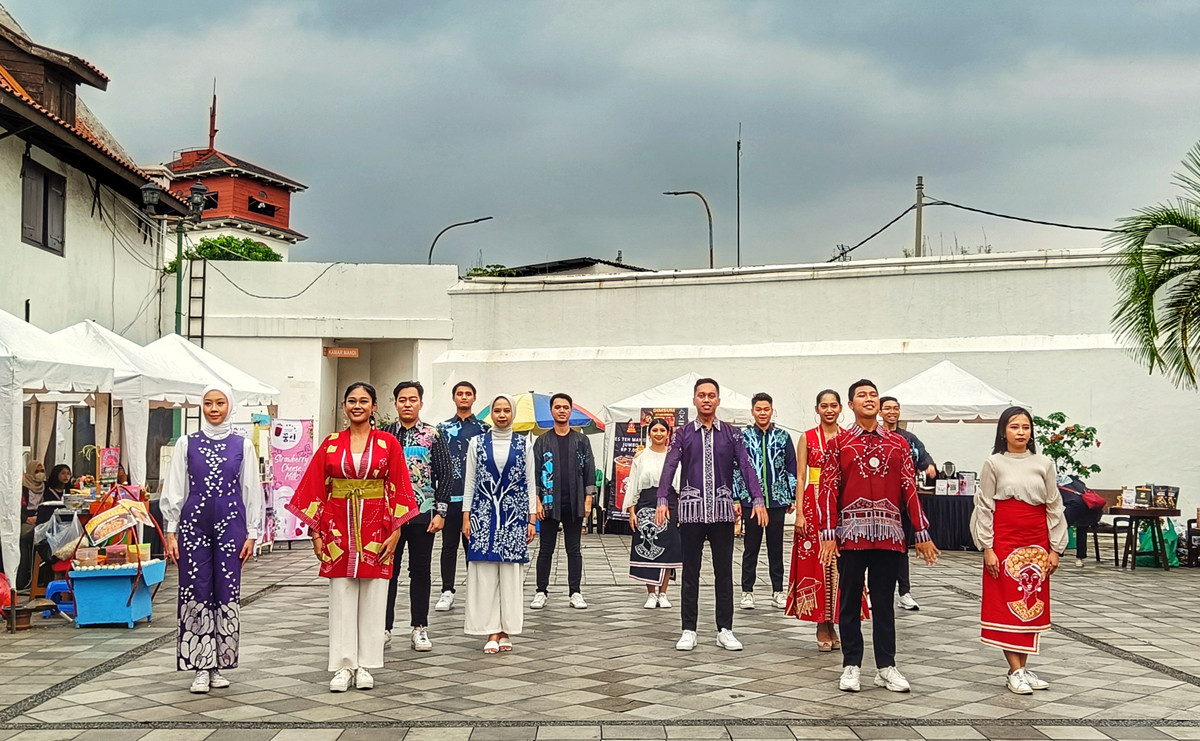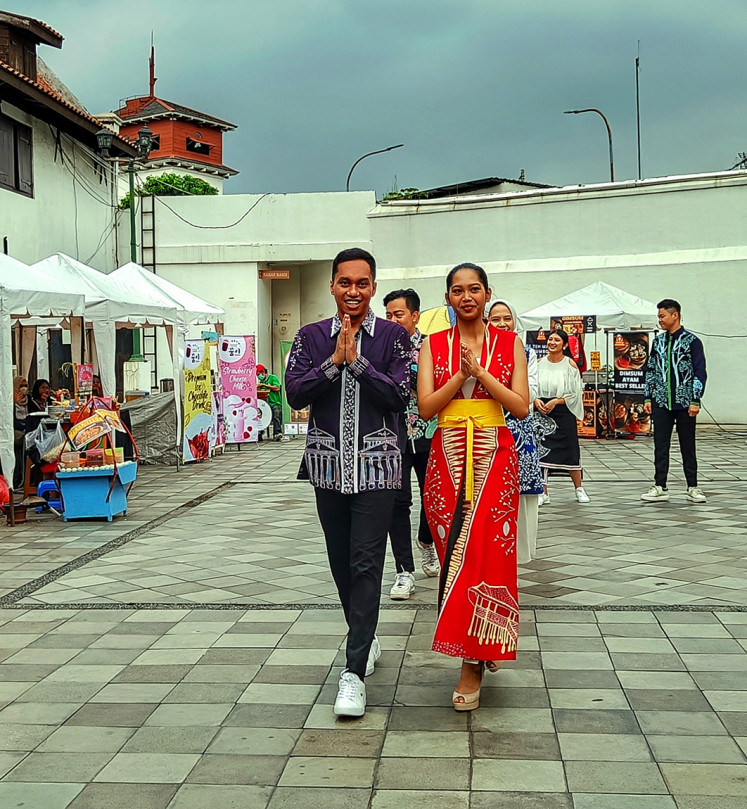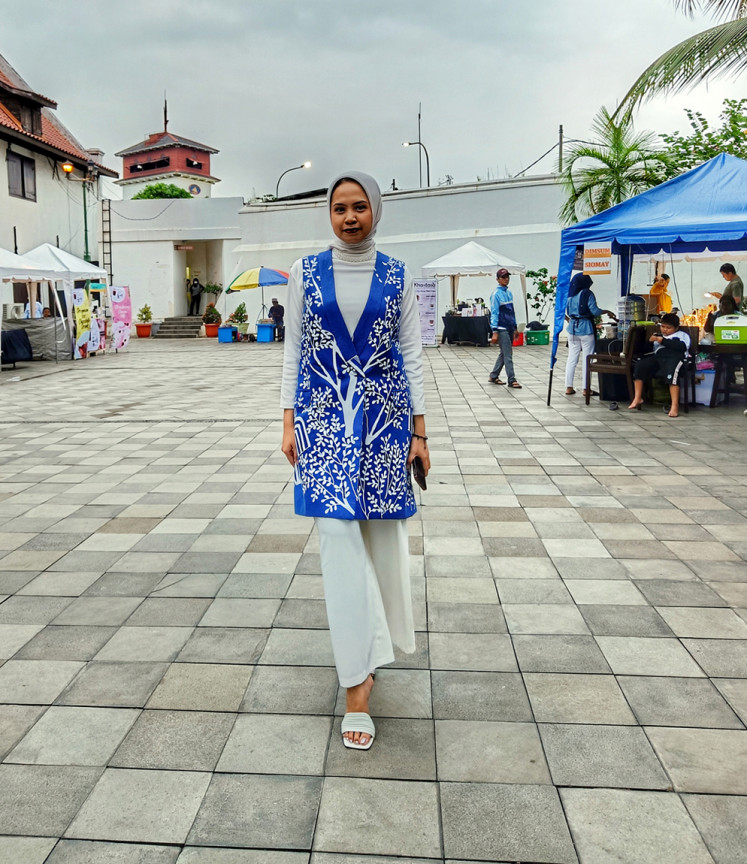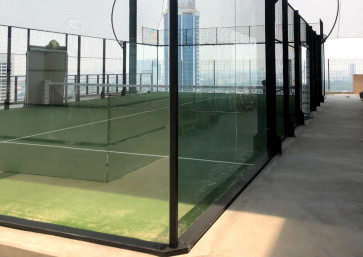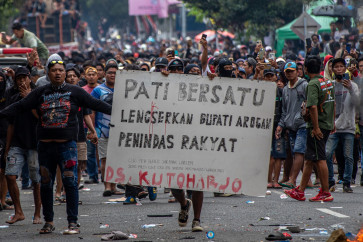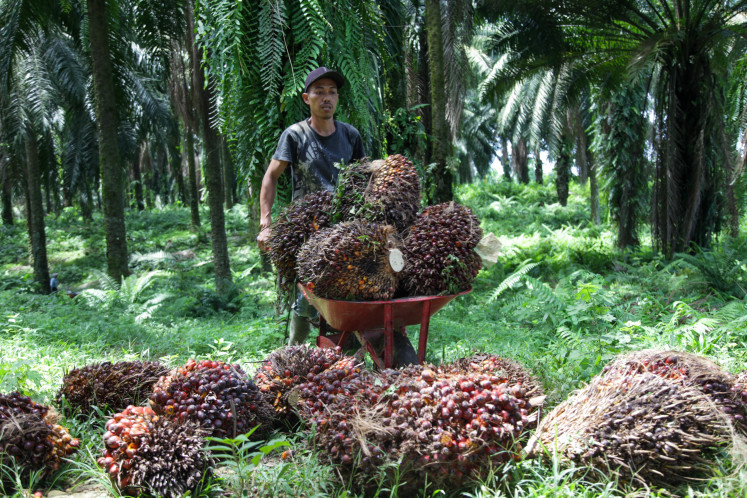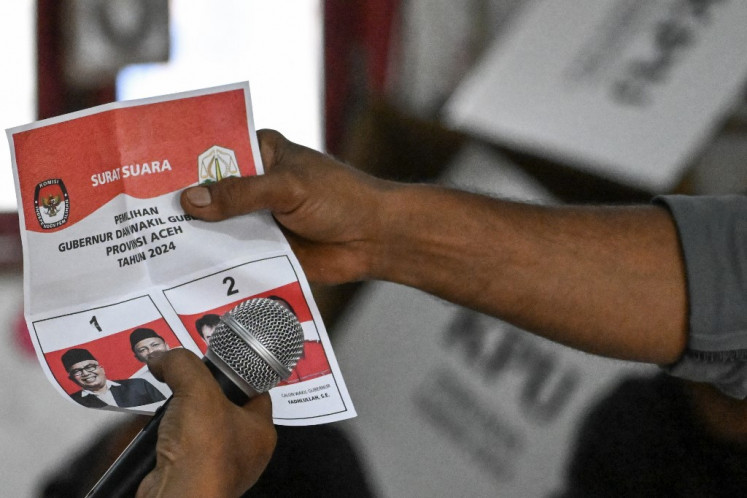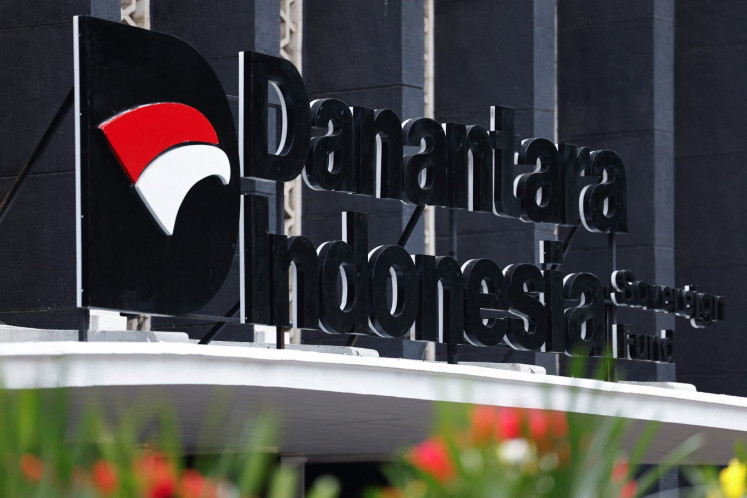Popular Reads
Top Results
Can't find what you're looking for?
View all search resultsPopular Reads
Top Results
Can't find what you're looking for?
View all search resultsBatik Marunda: Jakarta's living heritage
Change text size
Gift Premium Articles
to Anyone
Women living in Rusunawa Marunda and Rawa Bebek, North Jakarta, produce batik pieces that represent the capital.
“Batik is a living heritage,” Anderson Sitorus, a history expert of the Indonesia Hidden Heritage (IHH) community, said. “[Batik] records what’s happening in a society and perpetuates the story in a piece of fabric to wear.”
During the Festival Cerita Kota Jakarta (Jakarta’s Tales of the City Festival), held by the community in Jakarta Maritime Museum on Feb. 25, IHH featured Batik Marunda in a fashion show presented by members of the Ikatan Abang None Jakarta Utara (Association of Miss & Mr. North Jakarta) beauty pageant.
Hard work and determination
Batik Marunda is indeed a living testament to the struggles of the women of North Jakarta in improving themselves and their livelihood in the midst of changing times.
Between 2014 and 2016, more than 11,000 people living in Kalijodo, Pasar Ikan and Waduk Pluit slums were relocated to government-owned apartment blocks (Rusunawa) in Marunda and Rawa Bebek, North Jakarta.
“Many women that worked as cooks, house assistants and laundry washers in those areas lost their jobs,” Irmanita “Irma” Sinurat, architect and member of the Jakarta Handicrafts Council (Dekranasda) said, when interviewed by The Jakarta Post in the Jakarta Maritime Museum on Feb. 25.
“Ibu Iriana [wife of President Joko “Jokowi” Widodo] and Veronica Tan, who helmed Dekranasda Jakarta at that time, asked us to come up with something to improve [these women’s] knowledge and skills.”
At the same time, Dekranasda Jakarta was also trying to create an iconic souvenir of the capital.
“So I was thinking, ‘Why don’t we train [the women living in Rusunawa Marunda and Rawa Bebek] to draw batik with iconic Jakarta designs?’” Irma said.
Irma then asked her friends, who are artists and architects, to create batik designs that represented Jakarta. She also hired batik artisans to tutor the women living in Rusunawa Marunda and Rawa Bebek in the art.
“The women [living in Rusunawa Marunda and Rawa Bebek] were excited,” Irma recalled. “Hundreds of them showed up for the workshop.”
A pair of Abang None Jakarta Utara presenting Batik Marunda in the fashion show. (JP/Sylviana Hamdani)One of these women was Herni Kurniati. The 48-year-old had lost her job at a local warung in Pasar Ikan, North Jakarta, when she and her family were relocated to Rusunawa Rawa Bebek.
“For months, I did nothing but watch TV and gossip with other women in the apartment after completing my household chores,” Herni said. “So I was excited when Pak RT [neighborhood unit head] informed me that there would be a batik workshop in our Rusunawa.”
On weekdays, from 9 a.m. to 5 p.m., Herni and other participants learned to draw batik with an artisan at a studio in their Rusunawa.
“Sometimes, when trying to draw a difficult motif, my friends and I would stay in the studio until almost midnight,” Herni said. “We felt challenged to master it.”
Today, their hard work has paid off. Their creation, labeled Batik Marunda, is among the most favorite souvenirs of Jakarta sold in Alun-Alun Indonesia at Grand Indonesia, Central Jakarta, and Mitra Hadiprana in Kemang, South Jakarta.
Contemporary designs
During the festival in the Jakarta Maritime Museum, a group of young men and women, members of Ikatan Abang None Jakarta Utara, sang Indonesian pop songs and danced as they presented the Batik Marunda outfits that they were wearing.
“The designs [of Batik Marunda] are very chic and modern,” Jihan Amirah Rafidah, president of the Ikatan Abang None Jakarta Utara, said. “[Young people] can easily wear them when hanging out with friends at the mall or when attending a formal event.”
Jihan Amirah Rafidah showcasing her Batik Marunda vest. (JP/Sylviana Hamdani)In that afternoon, Jihan was wearing a blue vest, made by Batik Marunda, which is adorned with a design of Jakarta’s skyscrapers and pedestrian crossings on the back and a park full of trees at the front.
“[The batik] shows that Jakarta is becoming greener each day with more parks and gardens in the city,” Jihan said.
Jihan’s friends wore batik Marunda featuring patterns of Jakarta’s native flora and fauna, such as tapak liman (Elephantopus scaber) and burung kipasan belang (Rhipidura javanica), as well as the city’s art and dance performances.
Herni and five other women living in Rusunawa Marunda and Rawa Bebek, who came to the Jakarta Maritime Museum to watch the fashion show, were beaming.
“We’re so proud to see our handiwork being worn and presented in the fashion show,” Herni said. “We’ve shown people what Ibu-ibu Rusunawa [women living in Rusunawa] can do.”
Fair economy
Herni earns approximately Rp 1 million (US$65) to 2 million per month from drawing batik Marunda.
“For our family, [the earnings] really help,” she said.
Herni’s husband, who works as a construction worker, does not have a fixed monthly income.
“At Batik Marunda, we practice fair economy,” Irma said. “The women may propose the wage that they desire for working on a design, while I provide all their working materials.”
Irma also plans to train these women in making hand-stamped batiks after Lebaran.
“[Hand-stamped batik] will be our second line,” Irma confided. “[Hand-stamped batik] will have a more affordable price than our hand-drawn batik.”
Currently, a hand-drawn piece of batik Marunda is priced at Rp 900,000 - Rp 2,000,000.
Dekranasda Jakarta also plans to train the women participating in making batik Marunda in marketing and business management.
“I’m just the initiator,” Irma said. “In the future, these women have to know how to run and manage this business by themselves.”

